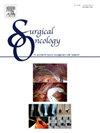Prevention in non-oncologic intent sarcoma surgery
IF 2.4
4区 医学
Q3 ONCOLOGY
引用次数: 0
Abstract
Background
Non-oncologic resection of soft tissue sarcomas (STS) continue to be a common referral to multidisciplinary sarcoma centers. While previous literature has reported tumor characteristics and outcomes related to non-oncologic resections, little is known regarding the surgical specialties most likely to excise such a mass and the non-oncological manner in which they do so. Such information can facilitate preventative strategies.
Purpose
The goals of this study are: 1) Investigate the surgical specialties that most often perform unplanned excisions and their diagnostic imaging approach, 2) Identify the frequency of non-oncological techniques utilized in initial unplanned excisions, and 3) Define indications for the use of radiation (XRT) in patients with initial non-oncologic resections of STS.
Methods
Patient data were collected from a large tertiary referral sarcoma center between 2005 and 2022. Eligible patients had a diagnosis of soft tissue sarcoma that was excised at an outside institution in a non-oncologic manner and subsequently underwent tumor bed re-excision using wide resection. Data regarding the index procedures at outside hospitals were obtained from referral documents and tumor bed re-excisions, along with follow-up care. A total of 124 patients were identified.
Results
Forty-three percent of referrals for non-oncologic resection of soft tissue sarcomas (STS) involved tumors located deep to the fascia. The majority of these referrals originated from General Surgery (N = 54, 44 %), Orthopedic Surgery (N = 35, 28 %), and Plastic Surgery (N = 11, 9 %). Preoperative imaging was conducted in 59 % of cases. General surgeons were less likely to obtain preoperative imaging (p = 0.009) and perform MRI scans (p = 0.013) than orthopaedic surgeons. The proper orientation of the incision based on location was incorrect for general surgeons in 26 % (N = 20) of cases. General surgeons were less likely to make an appropriate incision (p = 0.052) and to use a tourniquet during the initial procedure (p < 0.001). There were no differences among surgical subspecialties in the use of local anesthetic, drain use, or excision type regarding the initial non-oncologic resection. Residual disease following tumor bed re-excision was linked to masses removed in the clinic (p = 0.030) and initial stage IIIB tumors (p = 0.019). Our institutional use of radiation therapy (XRT) correlated with large initial size, high-grade histology, location deep to fascia, and tumors that were re-excised with staged coverage by plastic surgery.
Conclusion
Most referrals for initial non-oncologic resection of STS come from general surgery followed by orthopaedic surgery. Indications for pre-operative MRI imaging, incision orientation, and tourniquet use are education targets for general surgeons in training. Interpretation of MRI scans is an education target for orthopaedic surgeons in training. Clinic procedures are associated with residual disease on tumor re-excision. Radiation before tumor bed re-excision can be considered for larger, high-grade tumors that are deep to the fascia and when plastics coverage is planned.
Level of evidence
Level IV.
非肿瘤性意图肉瘤手术的预防
背景:软组织肉瘤(STS)的非肿瘤性切除仍然是多学科肉瘤中心的常见转诊。虽然以前的文献报道了与非肿瘤性切除相关的肿瘤特征和结果,但对于最有可能切除此类肿块的外科专科和非肿瘤性切除方式知之甚少。这类信息有助于制定预防战略。目的本研究的目的是:1)调查最常进行非计划切除的外科专科及其诊断成像方法,2)确定初始非计划切除中使用的非肿瘤性技术的频率,3)确定初始非肿瘤性STS切除术患者使用放射治疗(XRT)的适应症。方法2005年至2022年间,从一家大型三级转诊肉瘤中心收集患者数据。符合条件的患者诊断为软组织肉瘤,在外部机构以非肿瘤学方式切除,随后进行肿瘤床广泛切除。从转诊文件和肿瘤床再切除术以及随访护理中获得有关外部医院索引程序的数据。共发现124例患者。结果非肿瘤切除的软组织肉瘤(STS)患者中有43%涉及深至筋膜的肿瘤。这些转诊主要来自普通外科(N = 54, 44%)、骨科(N = 35, 28%)和整形外科(N = 11, 9%)。59%的病例术前行影像学检查。普通外科医生术前影像学检查(p = 0.009)和MRI扫描(p = 0.013)的可能性低于骨科医生。26% (N = 20)的病例中,普通外科医生根据切口位置选择的切口方向不正确。普通外科医生不太可能在初始手术中进行适当的切口(p = 0.052)和使用止血带(p <;0.001)。对于初始的非肿瘤切除,不同的外科专科在局部麻醉的使用、引流的使用或切除类型上没有差异。肿瘤床再切除后的残留病变与临床切除的肿块(p = 0.030)和初始IIIB期肿瘤(p = 0.019)有关。我们的机构使用放射治疗(XRT)与大的初始尺寸,高级别组织学,深至筋膜的位置以及通过整形手术分期覆盖重新切除的肿瘤相关。结论原发性非肿瘤切除STS的患者多为普通外科,其次为骨科。术前MRI成像指征、切口定位和止血带的使用是普通外科医生培训的教育目标。核磁共振成像扫描的解释是骨科医生在培训中的教育目标。临床手术与肿瘤再切除后的残留病变有关。对于深部筋膜的较大、高级别肿瘤,如果计划进行肿瘤覆盖,则可考虑在肿瘤床再切除前进行放疗。证据等级:四级。
本文章由计算机程序翻译,如有差异,请以英文原文为准。
求助全文
约1分钟内获得全文
求助全文
来源期刊

Surgical Oncology-Oxford
医学-外科
CiteScore
4.50
自引率
0.00%
发文量
169
审稿时长
38 days
期刊介绍:
Surgical Oncology is a peer reviewed journal publishing review articles that contribute to the advancement of knowledge in surgical oncology and related fields of interest. Articles represent a spectrum of current technology in oncology research as well as those concerning clinical trials, surgical technique, methods of investigation and patient evaluation. Surgical Oncology publishes comprehensive Reviews that examine individual topics in considerable detail, in addition to editorials and commentaries which focus on selected papers. The journal also publishes special issues which explore topics of interest to surgical oncologists in great detail - outlining recent advancements and providing readers with the most up to date information.
 求助内容:
求助内容: 应助结果提醒方式:
应助结果提醒方式:


